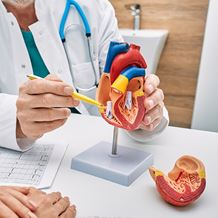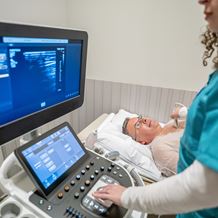What is an Atrial Septal Defect?
The atrial septum is the wall that separates the two upper chambers of the heart. An atrial septum defect (ASD) is a congenital condition that occurs when the wall structure does not form properly. It is one of the most common heart defects in children and is also known as a ‘hole in the heart’. An atrial septum defect creates an opening for blood to flow in the wrong direction, which means that extra blood can get into the lungs. Over time, this can put pressure on the heart and damage the blood vessels in the lungs. A small ASD will not have too much of an effect, but a large ASD can cause further health complications. There are four main types of atrial septal defect which are all defined by their location in the chamber wall. The most common type of defect (secundum) occurs in the middle of the heart wall (septum) and accounts for around 80% of ASD cases.
Symptoms and causes
As the septal defect is a structural problem that happens in the womb during development, the exact cause of atrial septal defect remains unknown. Certain genetics and lifestyle factors may increase the risk of congenital heart defects in babies. This includes smoking, alcohol and certain prescription medications. Most children have no symptoms other than a possible heart murmur, repeated respiratory infections or low weight. Adult symptoms are likely to develop as a result of the strain on the heart and lungs. Symptoms may include fatigue, shortness of breath, palpitations, fast heartbeat and swelling in the arms and legs.
How is it diagnosed?
ASD is typically diagnosed through a variety of tests. Your doctor may recommend one or more of the following to confirm the
- Physical examination – heart murmurs can be identified using a stethoscope
- Echocardiogram – soundwaves create pictures to show how the blood is moving through the heart
- ECG (electrocardiogram) – to record the electrical activity of the heart and test for an irregular heartbeat
- Chest X-ray – to investigate the structure of the heart
- Cardiac MRI – radio waves give a detailed image of the heart
- CT scan – a series of X-rays help give detailed pictures of the heart
How is it treated?
The treatment pathway for atrial septal defect will vary on the size of the hole and the health of the patient. Where the ASD is small, it may up close on its own with no intervention necessary. If the hole is considered large enough to cause problems, or where there is any heart or lung damage present, your doctor may recommend that it is surgically repaired. ASD repair can be performed using a catheter and seal, usually inserted via the groin area and guided to the heart using imaging techniques. Alternatively, the ASD can be repaired with open heart surgery.

Other conditions
What's next?
If you have been experiencing heart-related symptoms, book an appointment with our cardiac services specialist today.
Our specialists in Cardiac Services
View all specialists





